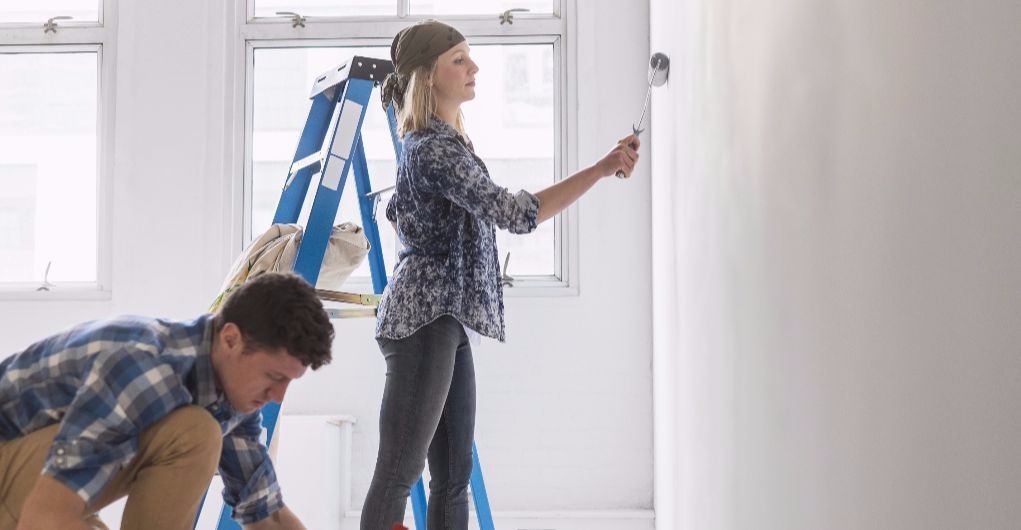When you picture your ideal home, you probably imagine a nice open floor plan, updated kitchen and bathrooms and pristine finishes — not shag rugs, dated decor and choppy layouts.
One of the dilemmas that most home buyers face is whether to create a dream house by renovating a fixer-upper or springing for a turnkey property in move-in condition.
Buying a Fixer-Upper
Fixer-uppers are always worth considering if you can get one at a good price and if you understand what you’re getting yourself into. If you’re budget conscious, purchasing a house in need of TLC might be the best way to get a deal in your target neighborhood and unlock value on a property. For instance, you might be able to find a bargain house a few streets over from where new construction homes are selling for top dollar. Aside from price, these types of properties can have some other redeeming qualities. Older homes in particular may have unique details and character worth restoring. Sometimes you can find a dated home in a well-established neighborhood on an ideal lot with mature plantings. You may not be able to replicate these desirable features with a newer model home.
Before you pull the trigger on a house that needs renovating, you’ll want to get real about the impact that buying the home will have on you finances and your lifestyle.
Older homes in particular may have unique details and character worth restoring. Sometimes you can find a dated home in a well-established neighborhood on an ideal lot with mature plantings. You may not be able to replicate these desirable features with a newer model home.
First off, you can get a general idea of project costs by walking through the property with a few contractors to obtain quotes. One of the obstacles with buying a house that needs a rehab is how to finance the work when you don’t have the cash on hand. It’s not impossible to pull off, but it certainly adds some complexity. It will require more time, patience and attention to detail to get approved for financing. You’ll also need to discuss lending products with your loan officer to see if you qualify. The most popular programs are 203(k) loans, which can be used for a wide variety of home improvement projects. There are even options for buyers who are looking to pursue a low down payment and want to wrap the mortgage and renovation costs into a loan.

Financing may not be the only challenge. If you’ve spent any time watching HGTV rehab shows, you may have noticed a running theme — renovation surprises! Not every real-life rendition of a Fixer Upper episode is filled to the brim with drama, but most people who have lived through a major project will admit that there is stress. Any unexpected issues can chew away at your budget and delay completion. You have to be able to keep a level head during a time period with ups and downs.
Finding your diamond in the rough and having your vision come to life can be truly rewarding, especially for those who have the drive and grit to work through the process. But, we’re not all Chip and Joanna Gaines, and if a fixer-upper is not your cup of tea, that’s okay.
Buying a Turnkey Home
Moving is hard enough and you may want to spare yourself the headaches associated with a fixer-upper by buying a turnkey property. If you can afford the potentially higher price tag of a newer model, it could be the way to go. It’s always nice to come home to a house where you’re not constantly thinking about all the improvement projects that need to be done before you can be happy with the living environment. On the financing front, a major advantage of opting for move-in ready condition is that there’s less red tape. These deals are more straightforward and can usually close faster and with fewer bumps, which is ideal for anyone relocating or with little time.
When looking at move-in ready homes, you’ll want to pay particular attention to the craftsmanship and make sure that the house has “good bones.”
If you’re touring properties that are not brand new, you’ll want to find out the age of some of the big ticket items like the heating system, roof, siding, windows, electric and plumbing so that you can budget and plan accordingly.
If you’re buying a new construction home, do some research on the developer to ensure that he or she has a solid reputation. Again, quality is key. Many people dream of buying a brand new home and enjoying all of the perks, including on-trend designs, technology and energy efficiencies. Although you will likely pay a premium for the property in comparison to older homes in the neighborhood, you shouldn’t have to budget much for maintenance for years to come. Just make sure that you get a list of warranties from the seller for all of the systems and appliances.
If you’re touring properties that are not brand new, you’ll want to find out the age of some of the big ticket items like the heating system, roof, siding, windows, electric and plumbing so that you can budget and plan accordingly. It can be easy to get distracted by finishes, like countertops, new tile and fresh paint. It’s important to train your eye and look beyond the flashy coverings to make sure that you are really getting what you think you are. There’s nothing worse than purchasing a home that you think is completely turnkey only to realize that the previous owners cut corners on their renovations.
Ultimately, whether you’re buying a house that needs to be totally gutted or a place where you don’t need to lift a finger, you should set realistic expectations about what you can (and want to) accomplish based on your time and budgetary constraints.